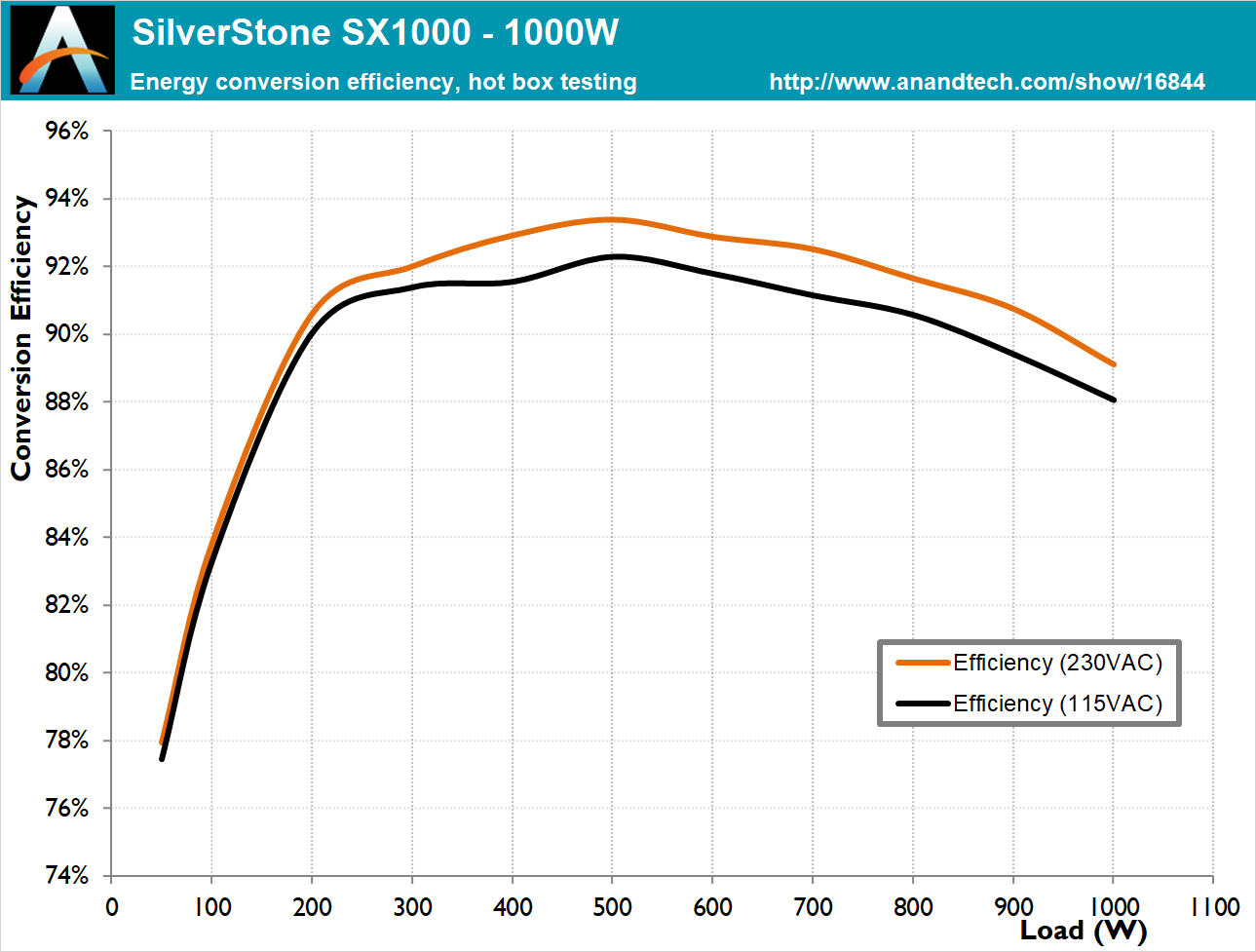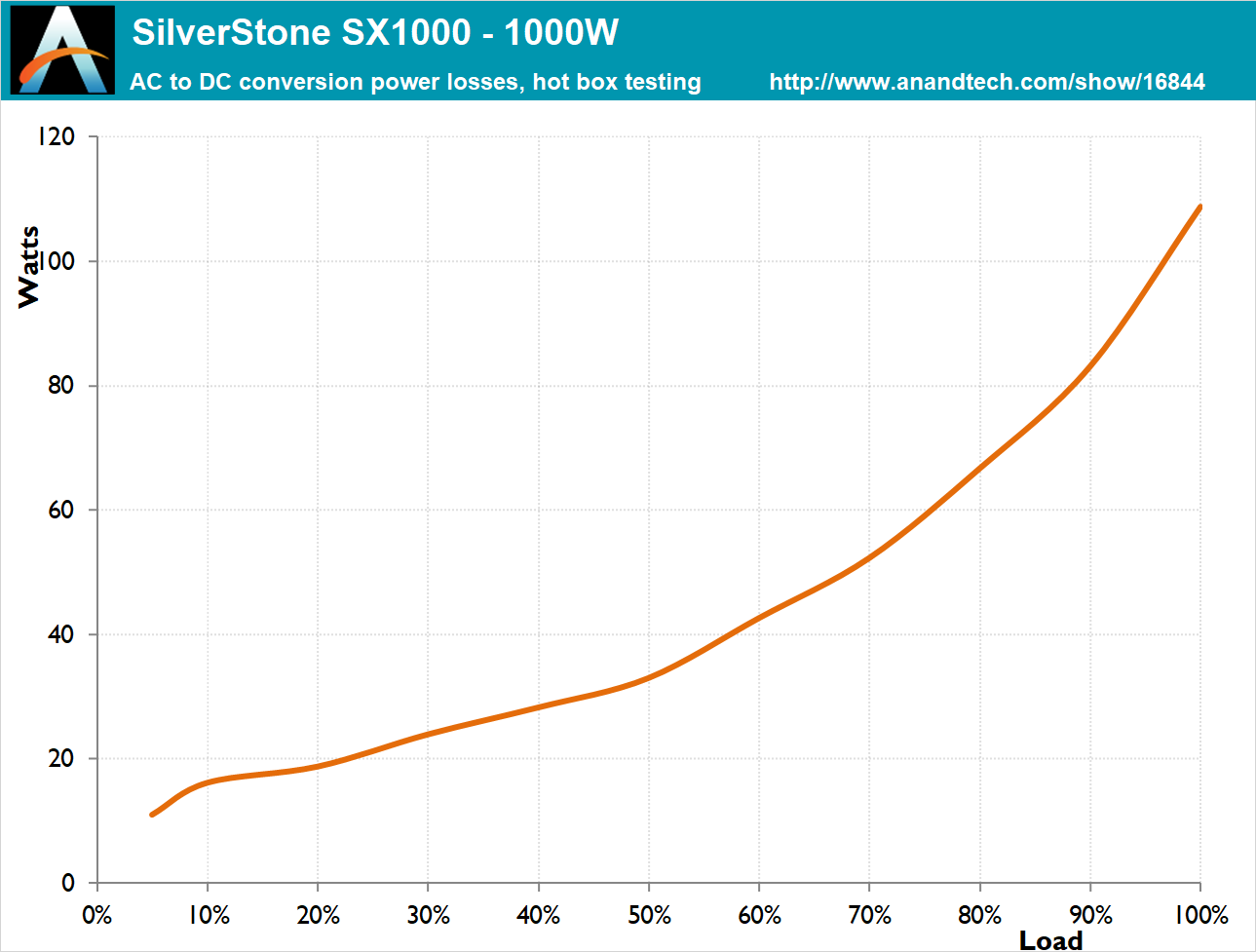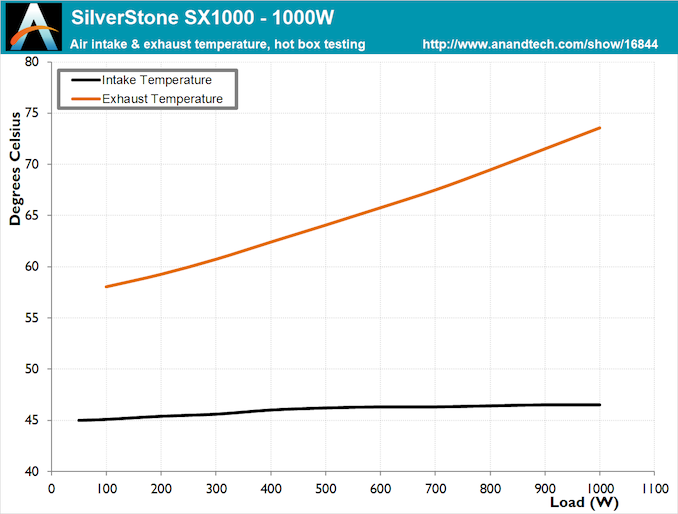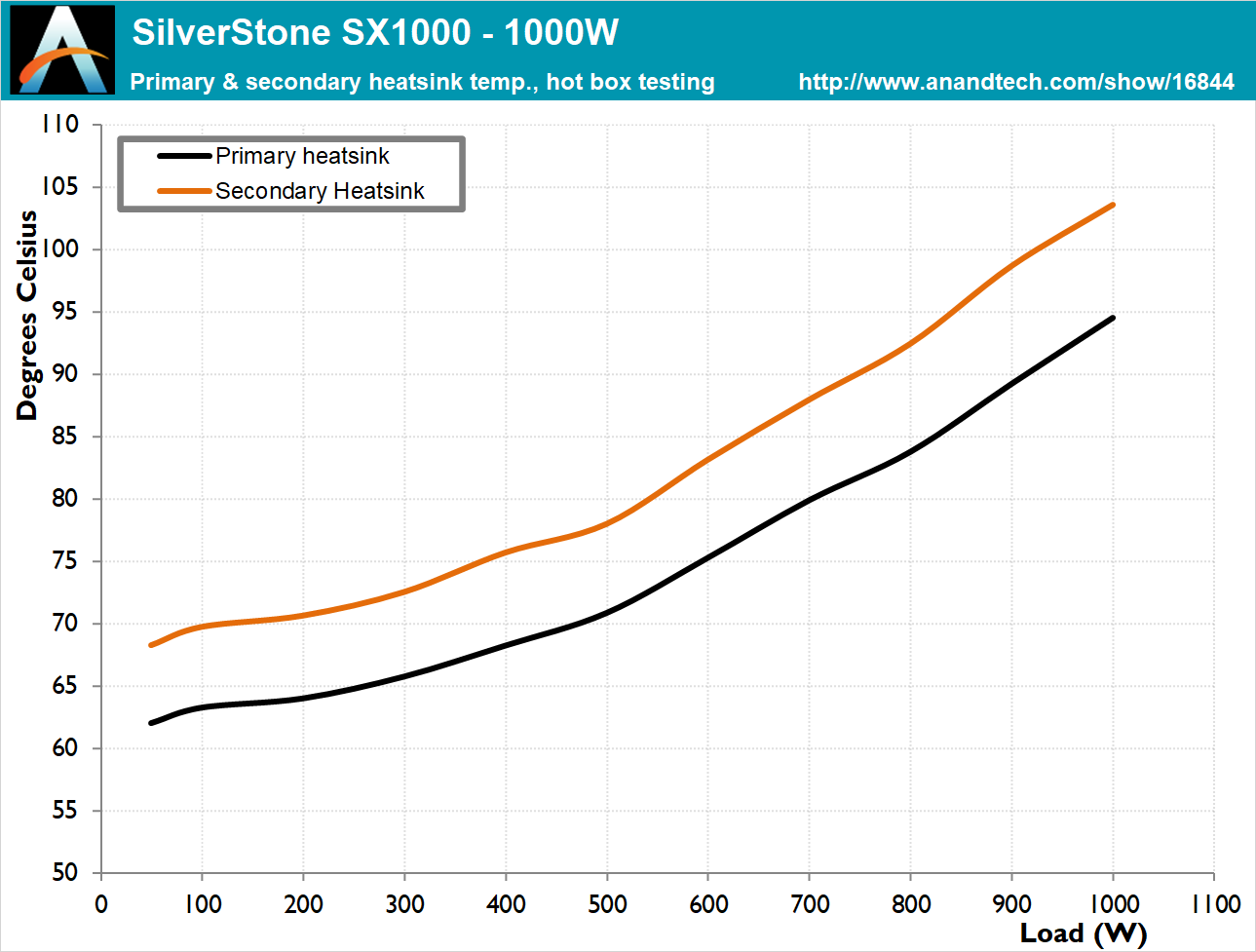The SilverStone SX1000 SFX-L 1 kW PSU Review: Big Power for Small Form Factors
by E. Fylladitakis on July 28, 2021 9:00 AM EST- Posted in
- Cases/Cooling/PSUs
- PSUs
- SilverStone
- SFX
- SFX-L
Hot Test Results (~45°C Ambient)
For the testing of PSUs, we are using high precision electronic loads with a maximum power draw of 2700 Watts, a Rigol DS5042M 40 MHz oscilloscope, an Extech 380803 power analyzer, two high precision UNI-T UT-325 digital thermometers, an Extech HD600 SPL meter, a self-designed hotbox and various other bits and parts. For a thorough explanation of our testing methodology and more details on our equipment, please refer to our How We Test PSUs - 2014 Pipeline post.
The SX1000 is designed to deliver its advertised performance with an ambient temperature of up to 40°C, a bit cooler than our standard 45°C hotbox. Although the unit did operate inside the hotbox without significant issues and did not shut down even at maximum load, there were significant signs of thermal stress. Naturally, the energy conversion efficiency takes a hit, dropping an average of almost 1% across the load range. The drop, however, is not equally distributed, as the SX1000 is almost just as efficient as it was outside the hotbox until the load reaches 40%, then the efficiency degrades as the load increases, and the efficiency drop is almost 1.7% at maximum load. This suggests that the components are getting significantly thermally stressed – which is to be expected, looking at the internal temperatures of the unit.
Rarely ever we see temperatures greater than 100 °C inside a PSU, either because their cooling is sufficient or because their thermal protection circuitry will shut them down. Neither was true for the SX1000, as the temperature did surpass 100 °C under maximum load with the unit operating inside our hotbox. Still, the SX1000 stayed in operation and performed within the expected parameters, even though it was clearly on the verge of shutting down due to thermal overload.
Even though we would expect the fan of the SX1000 to start almost immediately inside our hotbox, it actually did not. The thermal circuitry started the fan when the load reached 100 Watts, meaning that the SΧ1000 should stay dead silent with the PC idling even inside a very hot enclosure. Still, once the load increases even slightly above that point, the fan will start and its speed will start increasing sharply, as the SX1000 is trying to cope with the thermal load in these adverse conditions. It reaches its maximum speed when the load is just 400 Watts, with the sound pressure levels being very high at this point. With the fan unable to do anything more for the cooling needs of the SX1000, the internal temperatures reach uncomfortably high levels when the PSU is heavily loaded under such operating conditions.















37 Comments
View All Comments
shabby - Wednesday, July 28, 2021 - link
6 pci-e 8pin = 900 watts, that leaves 100 watts for the cpu? 🤔Charlie22911 - Wednesday, July 28, 2021 - link
That’s not how modern mono-rail PSUs work, the 12v power rail is shared between all of the 12v connectors. Theoretically you could draw the full rated load from just the CPU connector… until the wires melt.shabby - Wednesday, July 28, 2021 - link
Yes yes that I know, it just seems that you can fully utilize all the connectors at full load.shabby - Wednesday, July 28, 2021 - link
Can't... wheres that edit button!DanNeely - Thursday, July 29, 2021 - link
That's the case with essentially every PSU with more than one output because real world scenarios essentially never max the draw on every output at once. A PSU designed to be able to do that would have a headline number that was impossible to achieve in the real world at a much higher cost. This is especially the case with the PCIe connectors; where the number of connectors needs to be high enough to handle older cards using multiple 6 pin/75W plugs; but spending the extra few cents to make them all 6+2 connectors to facilitate maximum flexibility in wiring for newer cards using 8pin/150W ones makes it much more usable for consumers.meacupla - Wednesday, July 28, 2021 - link
Is anandtech capable of testing transient loads?I have heard that SFX sized PSUs don't respond as well to transient loads when compared to ATX sized PSUs. That you should get a higher wattage SFX PSU to compensate for this. Is there any truth to this?
DanNeely - Wednesday, July 28, 2021 - link
As badly as the small form factor hurt cooling at high loads and as loud as the fan gets it's a shame they didn't go for an 80+ Titanium spec design. In most cases the price penalty isn't worth it unless you're using very expensive power; but here shaving a a few dozen extra watts of waste heat off would significantly extend the quiet fan range.supdawgwtfd - Thursday, July 29, 2021 - link
It could be extra capacitors killing the power efficiency but as has been mentioned help transient loads.Just pure shit talking though.
Leeea - Wednesday, July 28, 2021 - link
Small form factor is just not worth the compromise.Wereweeb - Wednesday, July 28, 2021 - link
For you*